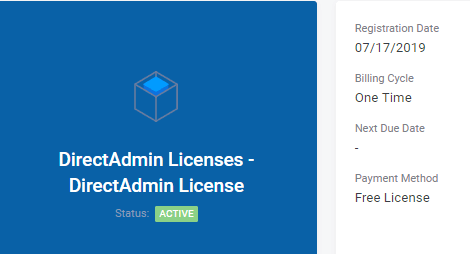Generate Dkim Key Exim Centos
Create a DKIM TXT record
Domain Keys Identified Mail (DKIM) helps you protect your company fromemail spamming and phishing attempts. It provides a method forvalidating a domain name identity that is associated with a messagethrough cryptographic authentication.
Dkimselector = x. Dkimprivatekey = /etc/exim/dkim.private.key. Dkimcanon = relaxed. (.) It allows all domains linked to this server to use DKIM and use the private key you just created. If you opt to change 'dkimselector' it'll need to be adjusted in later steps. Generate a DKIM Core Key. Enter the domain you'd like to generate keys for, for example dkimcore.org and hit the button. This online wizard is fine for generating keys for testing and evaluation. If you decide to use DKIM Core in production, though, you might want to consider the security risks.
For a complete description of DKIM, see the link to recommended DKIM sitesin the “External resources” section at the end of this article.
Note: The method described in this article differs from the way DKIM isset up for Rackspace Hosted Email and Exchange customers. If you are aRackspace Email, Hosted Exchange, or Office 365 customer, contact theRackspace Cloud Office team for help configuring the proper DKIM, DMARC, andSPF records.
The process of setting up DKIM involves the tasks detailedin the following steps:
Choose a DKIM selector.
Generate a public-private key pair. manual uninstall on mac
Publish the selector and public key by creating a DKIM TXT record.
Attach the token to each outgoing email.
What is a DKIM selector?
A selector is specified as an attribute for a DKIM signature and is recorded in the DKIM-Signature header field.
Because DKIM selectors give different DNS query names, the system uses the selector as an additional name component for validation. Under each domain name, there might be one too many unique DKIM DNS records associated with different selectors.
Selectors enable multiple keys under a domain name, which can provide separate signatory controls among departments, date ranges, or third parties acting on behalf of the domain name owner. No two services or products should use the same selector.
A selector can be anything you want, such as a word, number, or a string of letters and numbers.
For example, if you choose oct2019 for your selector, the domain name wouldbecome oct2019._domain.example.com. How ssl private key generate.
Before you begin
Before you log in to the control panel and create a DKIM record, there area couple of things that you need:
Choose a simple, user-defined text string to be your DKIM selector. Theselector is appended to the domain name to help identify the DKIM publickey. See the previous section for more information about choosing aDKIM selector.
Generate a public-private key pair by using a tool such as ssh-keygen onLinux or PuTTYgen on Windows. /using-generated-keys-for-encryption-rsa-c.html. For help creating key pairs, seeGenerate RSA keys with SSH by using PuTTYgen.
Create a DKIM TXT record
Use the following steps to create a DKIM TXT record in the Cloud ControlPanel:
Log in to the Cloud Control Panel.
In the top navigation bar, click Select a Product > Rackspace Cloud.
Select Networking > Cloud DNS.
Click the gear icon next to the name of an existing domain andselect Add DNS Record.
In the pop-up dialog box, select TXT Record as the record type.
In the Hostname text box, enter the selector text string that you chosein Step 1, followed by the literal string
._domainkey. For example, if youuse the default as the text string, you enterdefault._domainkeyin theHostname text box.Expand the Text box by dragging the corner, and then enter thefollowing information, pasting the public key that you generated in theprevious section after the
p=prompt:When you finish, the TXT record looks similar to the followingexample:
Click Add Record.
The DKIM TXT record is added to your domain.
For instructions about attaching the token to your outgoing email, see theSpecification section at DKIMcore.org.
Dkim Key Generator
Related articles
Generate Dkim Key Exim Centos File

External resources
Experience what Rackspace has to offer.
©2020 Rackspace US, Inc.

Generate Dkim Key Exim Centos 7
Except where otherwise noted, content on this site is licensed under a Creative Commons Attribution-NonCommercial-NoDerivs 3.0 Unported License